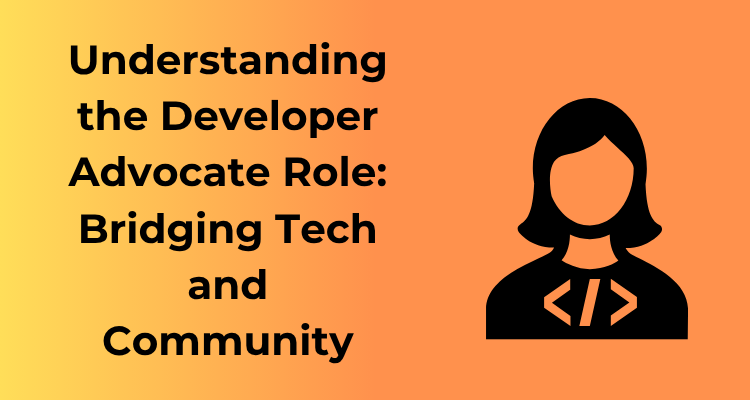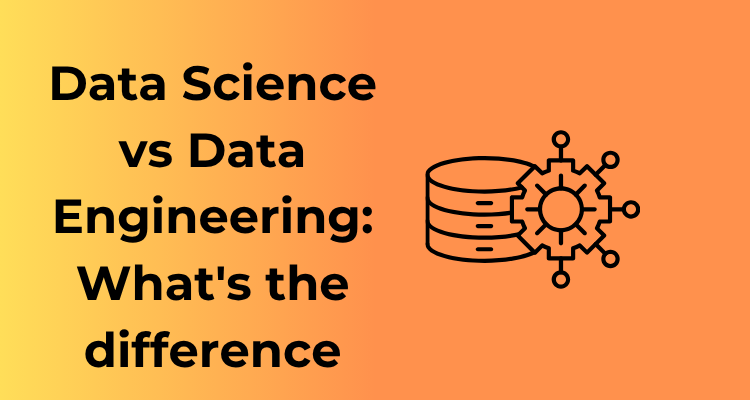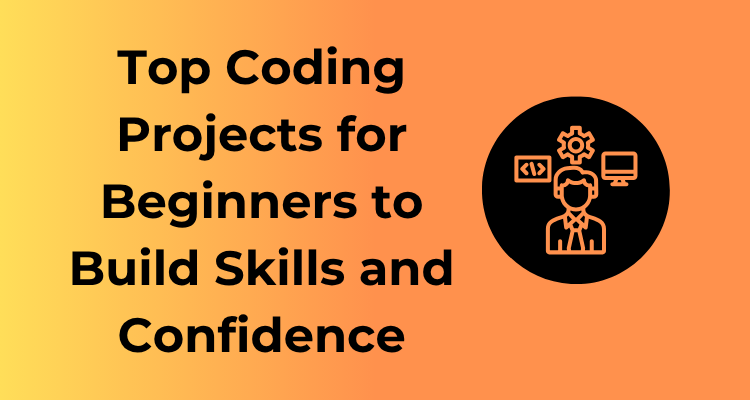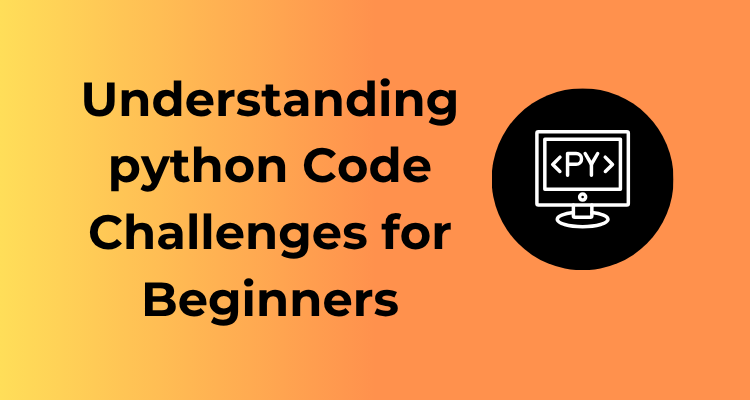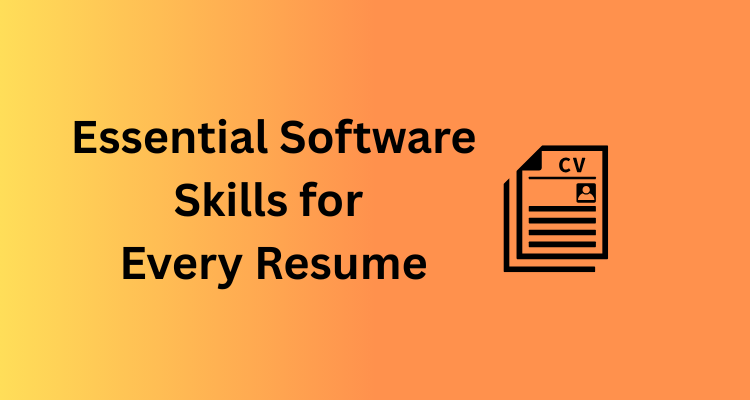Let’s dive into the fascinating world of Developer Advocacy and uncover what makes this role so unique and essential in today’s tech landscape. If you’ve ever been curious about what exactly a Developer Advocate does or how they fit into the tech ecosystem, you’re in the right place!
What Exactly is a Developer Advocate?
Think of a Developer Advocate—or Dev Advocate—as a bridge. They sit at the intersection of technology and community, helping developers make the most of a company’s tools, services, and products, while also championing the needs and feedback of developers within the company. Essentially, they advocate for developers to the company, and for the company to developers.
In simpler terms, they are the ultimate communicators between the people building the tech and the people using it.
Key Responsibilities of a Developer Advocate
Wondering what a day in the life of a Developer Advocate looks like? Here’s a snapshot:
- Educating developers: This includes creating blogposts, videos, tutorials, and documentation to help developers understand and utilize the company’s tools effectively. A good Developer Advocate knows how to break down complex concepts into digestible, accessible content.
- Engaging with the community: They attend events, conferences, host workshops, and spend time on platforms like GitHub, Twitter, or forums where developers hang out. This interaction helps to build trust and foster a sense of community.
- Gathering feedback and insights: Developer Advocates are the eyes and ears of developers. They bring back important information about challenges, opportunities, or unmet needs, ensuring the company’s product evolves in meaningful ways.
Why is the Role Becoming So Important?
In today’s fast-paced tech environment, competition is fierce, and developers are often the decision-makers or key influencers when choosing platforms or tools. If developers love your product, they’ll recommend it far and wide—which is why companies recognize the value of someone who fosters that love.
Developer Advocates are instrumental in creating more than just customers; they create enthusiastic product champions. Beyond that, they help cultivate a supportive ecosystem, which can be a game-changer in driving long-term success for companies.
What Makes This Role So Unique?
The coolest part about being a Developer Advocate is the variety. No two days look the same. One day could involve writing a blog post on a new feature, and the next could be spent coding a demo, presenting at a conference, or cracking lighthearted jokes with developers during a live Q&A session.
Also, the role is deeply mission-driven—it’s about making developers’ lives easier and technology more accessible. Who doesn’t love that?
A Word of Advice for Aspiring Developer Advocates
If you’re aiming to step into this role, focus on your ability to communicate effectively, learn continually, and build authentic connections. A love for helping others and a knack for explaining complex topics simply will take you far.
Remember, at its heart, developer advocacy is all about empathy: understanding the needs of the developers you’re serving and helping them succeed.
Bridging Gaps: How Developer Advocates Strengthen Tech Communities

Let’s talk about something exciting. You know how tech communities are buzzing spaces filled with passionate coders, curious learners, and problem solvers? Well, ever wondered who the secret superheroes are, ensuring everyone is connected, guided, and valued? That’s right—you guessed it! Developer advocates play the critical role of bridge builders, fostering strong connections between developers, communities, and the companies they represent.
Why Bridging Gaps is So Important
Have you ever been part of a tech community where you felt unheard or disconnected? Unfortunately, this is common. Many developers struggle with understanding complex new platforms, finding reliable resources, or even having their voices heard by software creators. Here comes the magic of a developer advocate! Their job, in simplest terms, is to make sure these gaps are bridged so developers feel heard, empowered, and supported.
In this digital ecosystem, where issues like communication breakdowns or poor user feedback loops can occur, these advocates step in to fix the cracks. They ensure mutual understanding. And trust me, when that mutual understanding is alive, it benefits everyone—all the way from a single programmer to entire organizations.
What Does Bridging Gaps Look Like in Action?
Developer advocates wear many hats. On any given day, here’s what their work might look like:
- Listening to the Developer Community: Advocates immerse themselves in forums, events, and online spaces to deeply understand developer needs. It’s like having a trusted friend who’s open to hearing your frustrations!
- Providing Educational Tools: They craft tutorials, webinars, or documentation that help developers master new tools or frameworks. Not as a sales pitch but as a genuine effort to help someone succeed.
- Acting as a Feedback Channel: Imagine you’re frustrated with a feature or need certain capabilities that don’t yet exist. Developer advocates ensure your concerns make it across to product teams who can make changes.
The Impact of Developer Advocates on Tech Communities
Now, let’s talk about the ripple effects. What happens when tech communities are supported by strong developer advocates?
- Developers Feel Valued: Developers know they’re not just users; they’re collaborators. This fosters loyalty and long-term engagement.
- Communities Become Vibrant: With proper communication and accessible resources, communities grow stronger, creating an environment for sharing and innovation.
- Product Improvements Accelerate: Because developer feedback is prioritized, companies can iterate faster, improving their software. Developers love tools that truly work for them!
The Heartbeat of Advocacy: Empathy and Trust
One misconception about bridging gaps is that it’s just about technical know-how. While understanding technology is important, empathy and the ability to build trust are what really set advocates apart. Developers want to know they’re interacting with someone who genuinely cares about their successes and challenges.
Key Skills That Shape a Successful Developer Advocate
So, you’re curious about what it takes to shine as a developer advocate? It’s more than just knowing how to sling code or presenting at conferences (although those do help!). A successful developer advocate combines a mix of technical expertise, communication skills, and community-building savvy. Let’s dive in and explore some of the key ingredients that make this role both dynamic and effective.
1. Deep Technical Knowledge
First things first, a developer advocate has to be technically skilled. They often serve as a bridge between developers and a company’s technical products or services, so you need to have a strong grasp of the tools, systems, and programming languages relevant to your organization.
That said, you don’t need to know everything! What’s essential is being excited to learn and stay updated on new tech trends. After all, being a developer advocate means being a lifelong learner.
2. Stellar Communication Skills
This is where a lot of the magic happens. It’s not just about talking, it’s about connecting. The ability to communicate complex technical concepts in a clear and engaging manner is crucial. Whether it’s through blog articles, presentations, live coding sessions, or even tweets, how you articulate yourself shapes how others understand and relate to the product.
And let’s not forget listening. As a developer advocate, you’re often the voice of the developer community back to your team, which makes listening empathetically and picking up on feedback absolutely vital.
3. Empathy and Relationship Building
Empathy might not seem like the flashiest skill, but it’s a superpower for any successful developer advocate. Understanding the pain points, challenges, and goals of developers is key to making meaningful connections. When developers feel heard and supported, they’re more likely to engage with your organization’s community and tools.
Think of it like being a good friend in the tech world—you’re there to offer help, guidance, and inspiration, not just push products.
4. Problem-Solving and Adaptability
Developers are a diverse group, and their needs can change rapidly. This means a good developer advocate thrives when solving problems and adapting to the ever-churning tide of the tech world. Whether it’s debugging an issue that a developer flagged or tailoring resources to meet different audiences’ needs, your ability to creatively solve problems will set you apart.
5. Content Creation Genius

Developer advocacy is, in many ways, rooted in storytelling. You need to craft content—from tutorials to videos to documentation—that informs, inspires, and empowers developers. Having a knack for identifying what content your community needs and delivering it in an approachable, actionable way is a key to success.
6. Networking and Community Engagement
Lastly, it’s the people that make this role exciting! Building relationships within tech communities, both online and offline, can strengthen your impact as a developer advocate. Engaging with developers at hackathons, meetups, and forums shows you’re invested in their success beyond just the product.
Integrating Developer Advocates in Product Development Strategies
Have you ever considered how a developer advocate (DA) can not only champion your product to the developer community but also actively shape its success during product development? It’s time to dig deeper into strategic integration and see how much value this role can bring to the table!
1. The Unique Perspective of Developer Advocates
Imagine having someone on your team whose finger is constantly on the pulse of your developer audience. Developer advocates have their ears tuned to developers’ feedback, frustrations, and praise. This connection makes them invaluable contributors during product development.
Why? Because they bring the *developer’s voice* into the conversation. Whether it’s usability, documentation clarity, or integration challenges, a DA ensures your product aligns with what developers actually need—rather than what you assume they need.
2. Early Involvement in the Development Cycle
A critical strategy for integrating developer advocates into product creation is involving them **early**. Don’t wait until your product is practically ready for launch! By looping them in during the ideation, design, and prototyping phases, you’re giving your team access to their informed insights before it’s too late to pivot effectively.
Picture this: a DA reviews an early API prototype and flags a cumbersome authentication process. Their feedback helps streamline the workflow, ensuring it’s developer-friendly and saving your team from potential frustration down the road. This proactive input can reduce rework later, keeping timelines and budgets in check.
3. Building a Feedback Loop
Want to build a product that stands out? **Create a continuous feedback loop** with your DA as the bridge between product teams and developers in the wild! They can gather input from meetups, GitHub issues, forum threads, or even Twitter.
Use this feedback loop to:
- Understand developers’ pain points with the current product
- Validate feature prioritization from a real-world perspective
- Test messaging clarity by observing how your target users interact with announcements or documentation
This iterative cycle creates a virtuous loop of improvement for your product.
4. Advocates as Product Marketing Co-Pilots
Doesn’t it feel seamless when a product design, development, and marketing narrative fit together? Developer advocates have their hands in all these spaces. As such, they’re perfectly suited to co-pilot your go-to-market strategies. They can ensure your product’s messaging resonates with developers and help craft compelling tutorials, demos, and real-world use cases to demonstrate the product’s value.
When developers feel heard, they’re more likely to adopt your tools and become evangelists within their communities.
5. Collaboration Without Silos
It’s easy for teams—even well-intentioned ones—to fall into silos. Integrating DAs into the product development process can act as a silo-buster, fostering collaboration between technical and non-technical teams. They speak both “developer” and “business” fluently, ensuring no insights fall through the cracks.
Measuring the Impact: Metrics That Matter for Developer Advocacy
So, you’re excited about the role of a Developer Advocate—but how do you know if it’s all working out? Measuring the success of a Developer Advocacy program can feel tricky, but trust me, it’s absolutely doable. Let’s dive into the metrics that actually matter.
Why Measuring Impact Matters
First of all, why even bother with metrics? Developer Advocacy is one of those roles that sits at the intersection of technical and community engagement, so it might seem intangible at first. But metrics are key to understanding whether your efforts are helping developers, growing awareness, and making an impact where it counts.
Think of it like this—tracking the success of your advocacy helps you figure out which strategies resonate with developers and which might need tweaking. Plus, putting numbers behind your work enables you to showcase value to stakeholders and leadership in your organization.
Metrics to Keep an Eye On
Okay, metrics! Let’s unpack some of the most meaningful ways to measure your impact. While not all organizations will measure success the same way, here are some universally powerful indicators:
- Community growth: Are your communities expanding? Keep track of members joining your forums, followers on platforms like Twitter or LinkedIn, or subscribers to email newsletters. Growth usually means you’re providing value!
- Event impact: For in-person or virtual events such as webinars, meetups, or conference talks, track attendance numbers, how many people engaged by asking questions, and survey satisfaction ratings.
- Content engagement: Developer Advocates often create tutorials, blog posts, videos, or cheat sheets. Use metrics like page views, completion rates, or video watch time to evaluate whether your content is hitting the mark.
- Tool adoption: If your advocacy ties into promoting specific products or tools, look at the adoption metrics. Are developers actually using new features? Is there growth in active users or API calls?
- Sentiment and feedback: Beyond hard numbers, pay attention to qualitative metrics like user feedback, social media mentions, or positive reviews. Tools like Net Promoter Score (NPS) can give you insight into how the community feels about the services or products you’re promoting.
Striking a Balance Between Quality and Quantity
It’s easy to obsess over numbers, but don’t let metrics become the only thing driving your work. Developer Advocacy is about people first, numbers second. A smaller but deeply engaged audience can be more impactful than a massive but passive one. So, focus on quality interactions—great blog comments, meaningful code contributions, or authentic relationships—and let your efforts naturally lead to measurable success.
Iterate and Improve
The beauty of tracking your impact is that it allows you to iterate on your approach. Dive into what’s working well and do more of that! For areas where you’re falling short, refine your strategies. Maybe your blog tutorials are engaging but your webinar attendance isn’t great—ask why. Could the topic change? Was the promotion lacking? Use metrics as a guide to continuously improve.
Common Misconceptions About Developer Advocacy
Developer advocacy is an exciting and dynamic role, but truth be told, it can be a bit misunderstood. Let’s dive into some of the common misconceptions about this profession, clear the air, and shed some light on what developer advocates actually do. Whether you’re considering taking on this role, hiring one, or simply curious, this breakdown might surprise you!
1.It’s Just About Public Speaking or Writing Blogs
Wrong! While it’s true that a lot of developer advocates spend time at conferences or crafting blog posts, that’s just the tip of the iceberg. Being an advocate means building bridges between developers and the products they use. Sure, they might host workshops or even start a YouTube channel, but their ultimate focus is on diving deep into technology, understanding developer pain points, and influencing positive change.
Think of it this way: public speaking and blogging are tools in the toolbox, but the job isn’t defined by them. Advocacy requires listening and engaging, not just broadcasting.
2.They’re Just PR for Developers
Let’s put this one to rest. Developer advocacy isn’t about selling something. Advocates aren’t here to market products or push conversion rates. Instead, they’re meant to advocate for developers, ensuring their voices are heard. It’s more about creating genuine relationships rather than transactional interactions. Advocacy focuses on trust, collaboration, and aligning technologies with the real-world problems developers face.
When companies empower their advocates properly, they see a mutual benefit—developers get solutions that work for them while companies build tools and frameworks that genuinely add value.
3. Developer Advocates Don’t Need Technical Skills
Hold up—this is a biggie! One of the biggest misconceptions is that being a developer advocate is a purely non-technical role. In reality, strong technical know-how is a must. Advocates spend a lot of time coding, testing SDKs (Software Development Kits), exploring APIs, or even contributing to open-source projects.
For an advocate to have meaningful, engaging conversations with developers, they need to understand the nitty-gritty details. Without technical chops, they’d lose credibility in highly technical communities.
4.It’s a One-Person Job
If only developer advocacy were so simple! Many people assume advocates act alone, operating somewhere between marketing, engineering, and community management. The reality, however, is that this role thrives on collaboration. Whether it’s teaming up with product managers to deliver feedback or working with engineers to advocate for better tools, developer advocacy operates across a large spectrum.
Successful advocates know their impact multiplies when they work alongside various teams, building synergy and ensuring every stakeholder’s objectives are met.
5.It’s All Fun and No Hard Work
Sure, developer advocacy comes with fun perks like attending hackathons or traveling to tech events. But don’t let that fool you—there’s a lot of hustle behind the scenes. Advocates juggle multiple responsibilities: engaging with community members, troubleshooting technical issues, collecting feedback, and advocating for better practices within their own companies. Oh, and did we mention the stamina required for all that interaction?
Future of Developer Advocacy: Trends to Keep an Eye On
Let’s roll out the crystal ball and dive into the future of developer advocacy! While the role of a Developer Advocate has evolved significantly already, the coming years hold exciting possibilities. The tech industry never stands still, and neither does the demand for developer advocacy. Below, we’ve mapped out trends and insights to help prepare both new and veteran advocates for what’s next in this dynamic field.
Emphasis on Community-First Approaches
If there’s one trend that’s crystal clear, it’s this: communities are taking center stage. Developer Advocacy isn’t just about pushing a product or hosting workshops anymore. It’s about building authentic, diverse, and inclusive communities where developers feel valued and heard. Expect to see more advocates working to create robust, trusted ecosystems for developers to connect, share knowledge, and grow together.
Take note, future advocates—your ability to nurture meaningful relationships will be as important as your technical skills. Whether you’re active in online forums, Discord servers, or open-source projects, being genuinely engaged is the way forward.
Remote Collaboration: The Norm
The shift toward remote work isn’t going anywhere, and developer advocacy is no exception. With global collaboration becoming mainstream, Developer Advocates will increasingly need to operate effectively across time zones and platforms. The upside? You’ll have the chance to reach developers in the farthest corners of the world!
Video content, livestreams, and online webinars will continue to dominate as tools for broad community engagement. Advocates need to up their game in creating engaging virtual experiences to balance the lack of in-person interactions. The ability to leverage async communication tools like Slack, GitHub Discussions, and social media creatively will also be a critical skill.
AI and Automation Get Involved
You guessed it—AI isn’t just a buzzword anymore; it’s shaping the way Developer Advocates work. Picture this: tools that help advocates analyze developer sentiment, AI-driven documentation assistants, and even bots that answer FAQs in community forums. The future of advocacy includes integrating AI into workflows to better serve developers.
However, don’t let AI replace your personal touch. Developer Advocates will need to strike a balance between automation and authentic, human interactions. Use technology to enhance your skills, not to mask them!
Expanded Focus on Metrics
As Developer Advocacy matures, companies are realizing that it’s not just a nice-to-have—it directly impacts business goals. Expect greater scrutiny on metrics that go beyond vanity numbers like social media followers. Future advocates will be tasked with demonstrating their value through meaningful data, such as developer retention rates, product adoption metrics, and even community sentiment analysis.
Are you a numbers nerd? Good news: having a data-driven mindset will be a major advantage going forward. But don’t worry if you’re not there yet—there’s plenty of time to learn!
Personalized Education for Developers
Here’s an exciting development: the future of advocacy involves offering more tailored educational resources. Instead of one-size-fits-all tutorials, developers can expect personalized learning paths catered to their skill levels, interests, or the specific challenges they face.
Developer Advocates will likely curate, create, and distribute highly specialized content—ranging from interactive coding challenges to hands-on virtual workshops. Translation? Get ready to sharpen your content creation skills!

